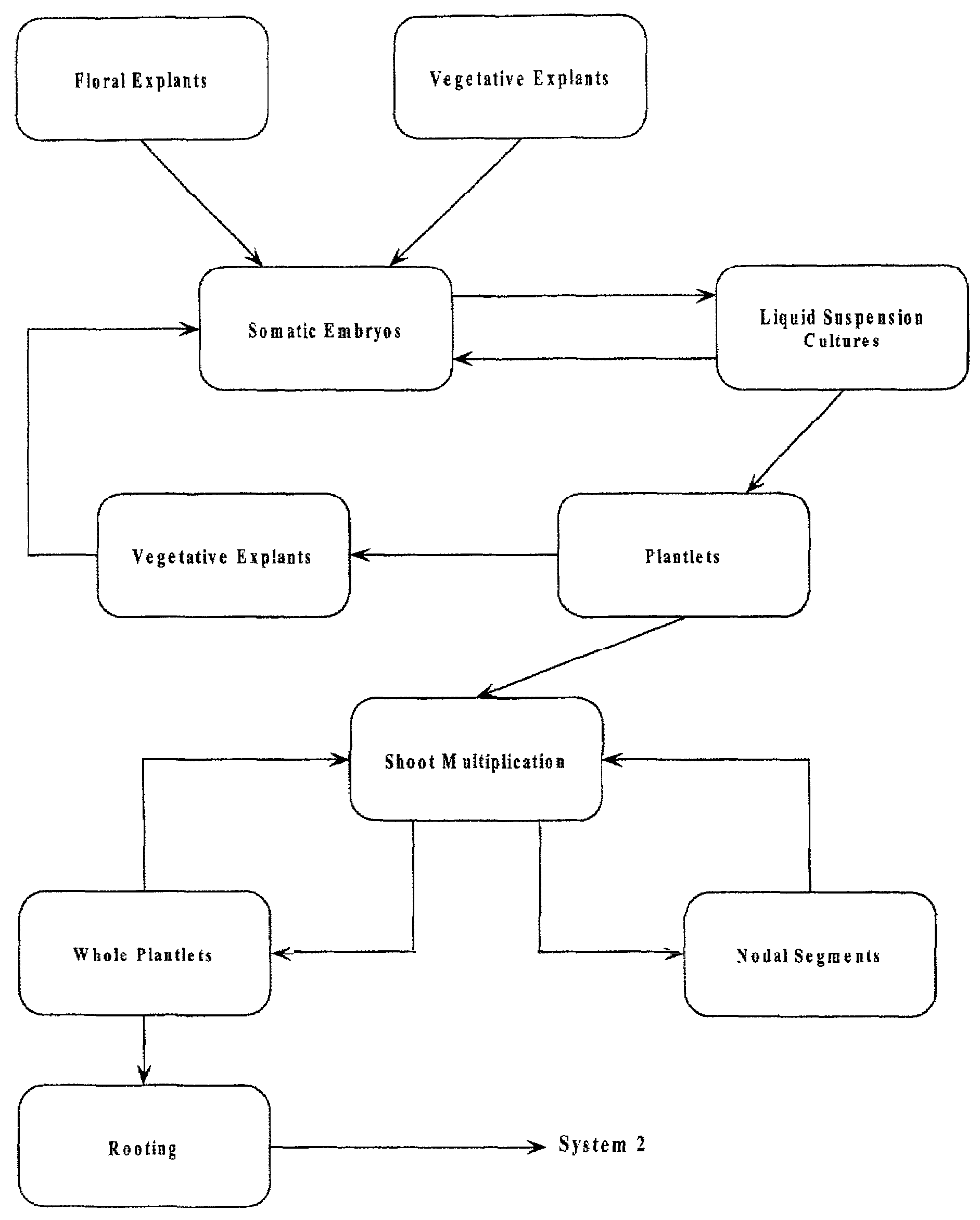Methods and apparatus for the micro- and macropropagation of reed grasses
- Summary
- Abstract
- Description
- Claims
- Application Information
AI Technical Summary
Benefits of technology
Problems solved by technology
Method used
Image
Examples
example 1
Arundo donax Somatic Embryogenesis and Plant Regeneration
[0043]Plant Material Flowering shoots of Arundo donax were obtained from four clones (designated A, B, C, D) maintained in experimental plots at Auburn University. Two stages of flowering material were used: 1. Floral material three-fourths extruded from the leaf sheath, designated old (O). 2. Floral head still 99% enclosed in leaf sheath, designated young (Y). A shoot from each of the two stages was divided into three sections: 1. bottom (B) 2. middle (M) 3. upper (U). Plant material was washed in soapy water, rinsed under running water for 10 minutes, washed with agitation in 20% Clorox for 20 minutes and rinsed five times in sterile water.
[0044]Methods Media used were Linsmaier and Skoog basal medium supplemented with 2, 4-D, and either IAA, K, or BA, for embryo generation and for the germination Murashige and Skoog basal medium. All media were adjusted to pH 5.8, gelled with 0.2% Gelrite, and autoclaved for 25 min at 120° ...
example 2
[0048]Plant Material Explant pieces 1–5 mm. in length were excised from sterile plantlets produced from embryogenic cultures. Portions of leaf, leaf sheath, nodes, and roots were cultured in the same manner as in Example 1., using the preferred medium. All explant sources were responsive to some degree, but the preferred explant material was from the leaf sheath, which produced embryos and plantlets as in Example 1.
example 3
[0049]Embryo multiplication in suspension culture. Five embryo clusters of 5–15 embryos each were visually selected from cultures described in Example 1. and transferred to Erlenmeyer flasks containing a liquid medium. The medium utilized was the preferred medium for embryogenesis given in Example 1., minus the gelling agent and with or without the addition of asparagine (0.75 g / L). Embryo clusters were divided on a weekly basis with half of the embryo clusters returned to fresh liquid medium and half the embryo clusters placed on germination medium to germinate into plantlets.
PUM
 Login to View More
Login to View More Abstract
Description
Claims
Application Information
 Login to View More
Login to View More - R&D
- Intellectual Property
- Life Sciences
- Materials
- Tech Scout
- Unparalleled Data Quality
- Higher Quality Content
- 60% Fewer Hallucinations
Browse by: Latest US Patents, China's latest patents, Technical Efficacy Thesaurus, Application Domain, Technology Topic, Popular Technical Reports.
© 2025 PatSnap. All rights reserved.Legal|Privacy policy|Modern Slavery Act Transparency Statement|Sitemap|About US| Contact US: help@patsnap.com



